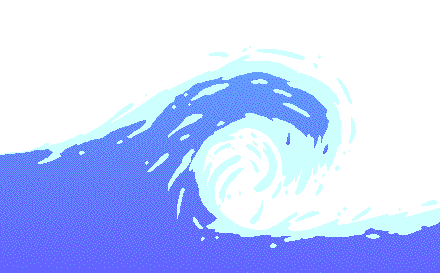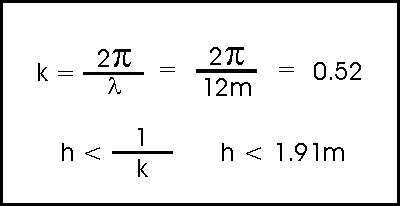The Use of CODAR High Frequency
Radar to Attain Wave Height Measurements

Wave Height Measurements with CODAR
The Use of CODAR High Frequency
Radar to Attain Wave Height Measurements

Wave Height Measurements with CODAR

By adding up the energy in the first-order peaks you can get the Fourier directional coefficients of the directional ocean spectrum at that ocean wavenumber. These directional coefficients are interpreted to give the wind direction which is hopefully the same as the short wave direction.
The second-order radar spectrum is produced by pairs of ocean waves, with wavenumbers and directions related to the radar vector through the second-order Bragg resonance condition. The spectrum can be expressed as a 2-dimensional integral equation over a function which is the product of antenna pattern, coupling coefficient, Bragg resonance condition and the product of the ocean wave spectra of the pair of waves producing the scatter. The data is the radar spectral co- and cross- spectra between the antenna return, the unknowns are the ocean wave spectra. All that's left is to solve this equation.
The Bragg resonance condition is used to reduce the 2-dimensional equation to 1-dimensional. In the high-energy part of the second-order radar spectrum, one of the ocean waves producing the scatter is a long ocean wave, the other is approximately the same as the wave producing the first-order scatter. So you can substitute the spectrum that is gotten from the first-order radar spectrum. This leaves a linear integral equation for the remaining ocean spectral factor, which is solved numerically. By looking at all the radar frequencies you recover the Fourier directional coefficients of the ocean wave spectrum all the ocean wave frequencies i.e. the complete spectrum.
The mean-square waveheight is the integral of the nondirectional coefficient of the temporal wave spectrum over frequency- then the significant height is about 3 times the square root of this.
For the wave solutions to be applicable, there is a limit placed on waveheight that can be measure with a particular frequency. If the sea-state exceeds this limit, the second-order radar spectrum begins to saturate, and the value of the ocean waveheight predicted will be too low. In this case a lower transmit frequency should be used.
For the CODAR system at Rutgers used to obtain the data for this project, the waveheight limit is as follows:

That means that the system cannot reliably measure waves that are larger than about 2 meters. To overcome this constraint, the frequency used must be lowered from 25 MHz.